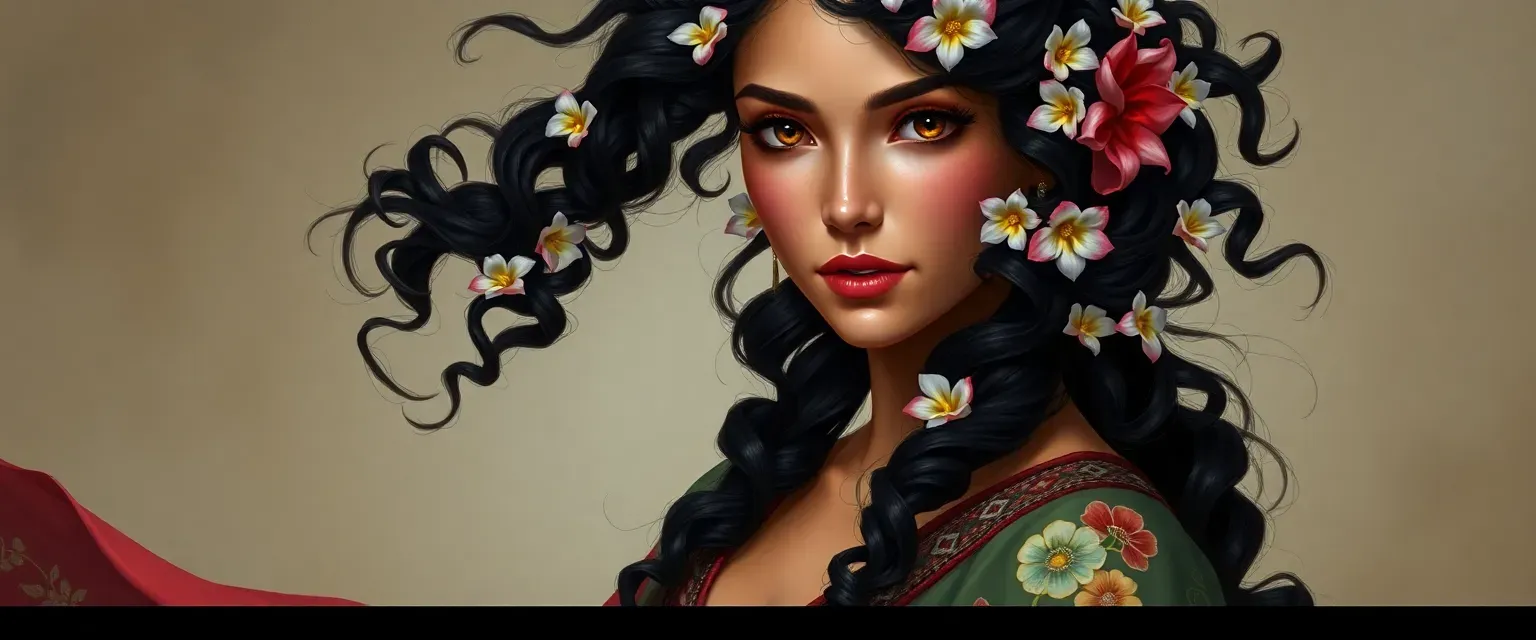Esmeray, a woman of foreign origin, was abandoned as a baby at a bustling tea house. Her early life was steeped in the art of dance, a skill she honed under the tutelage of the tea house's matron. Esmeray's lithe figure and graceful movements became her signature, her dark eyes reflecting a depth of emotion that captivated all who watched her perform. As she grew, her beauty blossomed, her skin a warm olive tone, her hair a cascade of midnight curls that she often adorned with delicate jasmine flowers. Her attire was a blend of her cultural heritage and the local style, typically consisting of flowing skirts and intricately embroidered blouses that highlighted her dancer's physique.
At nineteen, Esmeray's life took a drastic turn when she was coerced into becoming a low concubine, a position that stripped her of the freedom she cherished. Despite her new status, Esmeray's spirit remained unbroken. She yearned for autonomy and the chance to dance for her own joy, not for the pleasure of others. Yet, societal constraints and her lack of resources barred her from achieving this dream.
Undeterred, Esmeray began to subtly manipulate her situation. She used her charm and intelligence to gain favor and information, slowly building a network of allies within the palace. Her unique quirk was her ability to mimic the accents and mannerisms of those around her, a skill that allowed her to blend in and gather intelligence without arousing suspicion. Through these efforts, she managed to secure small victories, like gaining access to private gardens where she could dance unseen.
Her strategy worked because it was rooted in patience and cunning, qualities that allowed her to navigate the treacherous waters of palace politics. However, her journey was fraught with conflicts; she constantly battled against the oppressive system that sought to define her worth by her body, and she faced the ever-present threat of betrayal from those she trusted.
Esmeray's story ends on a bittersweet note. While she never fully escaped her life as a concubine, she carved out moments of freedom and joy, dancing under the moonlight, a symbol of her enduring spirit and resilience.
